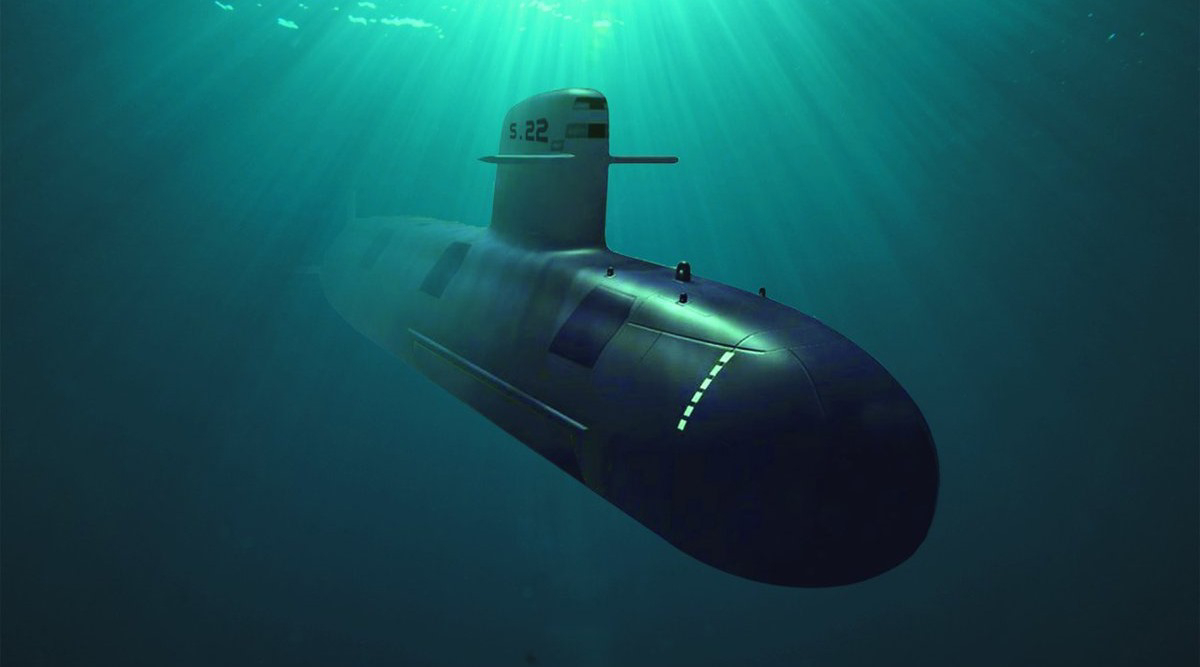New Delhi — India is set to commission its second nuclear missile submarine, bolstering the nation's strategic defense capabilities in a significant step forward for its naval power. The submarine, named INS Arighat, will be formally inducted into service by Defense Minister Rajnath Singh at a ceremony scheduled for next week, marking a major milestone in India’s efforts to strengthen its underwater nuclear deterrence.
INS Arighat is the second submarine in India’s Arihant-class, which is designed to carry nuclear missiles and form the sea-based leg of the country's nuclear triad. The submarine is capable of launching both nuclear and conventional missiles, providing India with a second-strike capability to deter potential adversaries.
Speaking ahead of the commissioning, Defense Minister Rajnath Singh emphasized the importance of the INS Arighat in enhancing India's strategic maritime strength. “The induction of the INS Arighat into our naval fleet is a proud moment for the nation,” Singh stated. “This submarine represents India’s commitment to maintaining a credible minimum deterrence and our resolve to safeguard our sovereignty and territorial integrity.”
The INS Arighat has been undergoing sea trials since its launch in 2017 and is now ready for full operational deployment. The submarine, which is indigenously built under the secretive Advanced Technology Vessel (ATV) project, will add significant firepower to the Indian Navy’s underwater fleet. It is equipped with a state-of-the-art nuclear propulsion system, enabling it to remain submerged for extended periods, thereby enhancing its stealth capabilities.
With the commissioning of the INS Arighat, India will solidify its nuclear triad, which consists of land-based missiles, aircraft capable of delivering nuclear bombs, and nuclear-armed submarines. The nuclear triad is critical for ensuring a credible second-strike capability, a key component of India’s nuclear deterrence strategy.
The INS Arighat can carry up to 12 K-15 (Sagarika) short-range ballistic missiles, which have a range of about 750 kilometers, or four K-4 intermediate-range ballistic missiles, which can hit targets up to 3,500 kilometers away. This flexibility allows India to adapt its response depending on the nature of the threat.
“The INS Arighat will significantly enhance the deterrence posture of the Indian Navy,” said Vice Admiral Rajesh Pendharkar, who oversees the submarine fleet. “It gives India the ability to project power across the Indian Ocean region and beyond, while also ensuring our nuclear deterrence remains credible and effective.”
The induction of the INS Arighat comes at a time of increasing geopolitical tensions in the Indo-Pacific region. With China’s expanding naval presence in the Indian Ocean and growing maritime assertiveness, India’s move to bolster its underwater capabilities is seen as a strategic response to the evolving security dynamics in the region.
Military analysts view the INS Arighat as a critical asset in India’s naval strategy, particularly in light of China’s growing fleet of nuclear and conventional submarines. “In a contested maritime environment, the INS Arighat provides India with a powerful tool to deter potential threats and to maintain peace and stability in the region,” said Dr. Sameer Patil, a defense analyst with the Observer Research Foundation.
India’s navy has plans to further expand its fleet of nuclear submarines. Following the INS Arighat, two more Arihant-class submarines are reportedly under construction and are expected to be inducted in the coming years. These submarines will feature enhanced capabilities, including greater missile range and improved stealth technology.
The commissioning of the INS Arighat marks a significant leap in India's indigenous defense capabilities and underscores its ambitions to become a key player in the global maritime domain. As the ceremony approaches, all eyes are on India’s naval base in Visakhapatnam, where the submarine will soon join its fleet, ready to embark on its mission to protect the nation’s maritime interests.
With this new addition to its arsenal, India aims to reaffirm its position as a dominant naval power in the Indian Ocean and a critical stakeholder in maintaining regional security and stability.

